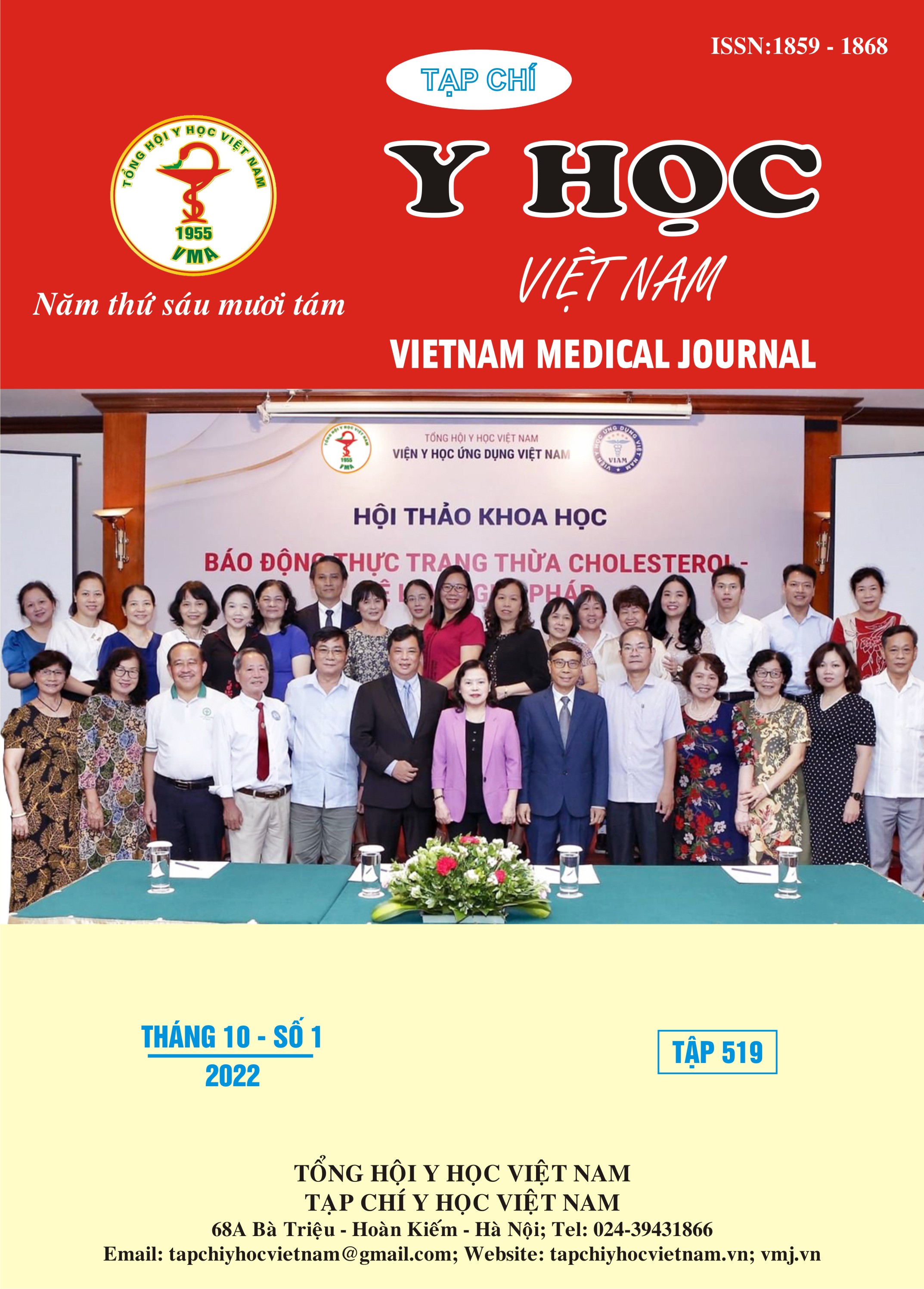SITUATION OF PAIN, INSOMNIA AFTER ABDOMINAL OPEN OPERATIONS AND SOME RELATED FACTORS
Main Article Content
Abstract
A study at Tuyen Quang Provincial General Hospital was conducted on 300 patients gastrointestinal open post-operation, with the objectives: (1) describe levels of pain, insomnia and clinical symptoms after surgery by open laparotomy (2) analyzes the relationship between pain, insomnia, postoperative recovery and other factors. Research method: with a prospective descriptive study design, using results in medical records, supplementing the pain questionnaires according to the VAS scale, the post-operative recovery quality questionnaire - QoR-15, the questionnải on sleep quality. The results of the study showed that: The patient's pain level decreased significantly over time in the days after surgery. The rate of severe pain on the first day after surgery was 91.0%, reduced to 20.7% on the second day; on the 3rd day only 2.3%. The percentage of patients without pain increased from 4.0% on the third day after surgery to 86.0% on the day of discharge. The percentage of patients with good pain relief (>=3 points reduction) at the time of discharge compared to day 2nd was 74.3%. The percentage of patients who could not sleep decreased from 26.7% on the first day after surgery to 12.7% on the second day after surgery and 2.7% on the third day. The rate of bad sleep decreased from 72.0% on the first day to 61.3% on the second day and 29.7% on the third day and 10.0% on the day of discharge. The rate of normal sleep in the first, second, third day and hospital discharge gradually increased, 1.3% respectively; 26.0%; 67.7% and 90.0%.There was a statistically significant association between pain improvement and sleep quality. The level of postoperative pain affects the patient's sleep status. The more pain, the worse the insomnia. There is a statistically significant relationship between the level of pain after surgery and the patient's recovery level. Women have better pain relief than men. There is a relationship between the type of surgery, the condition of the incision and the complication status of the patient with the postoperative pain level. It is possible to rely on pain score and level of insomnia to predict the date of thread removal with a fairly close correlation coefficient (R = 0.604) and a statistically significant multivariate function (p). <0.001). The pain score and the degree of insomnia can be used to predict the leng of stay with the correlation coefficient R = 0.592 and the multivariate correlation function with statistical significance (p<0.001). Conclusions: Pain and insomnia decreased the most after day 2. There was a relationship between pain and sleep quality. Degree of analgesia and insomnia related to the quality of postoperative recovery. It can be based on pain score and insomnia score to predict the day of thread removal and the leng of stay.
Article Details
Keywords
Pain, insomnia, quality of recovery after open gastrointestinal surgery, prognosis date of thread removal and LOS
References
2. Bộ Y tế (2012). Thông tư Hướngdẫn công tác gây mê - hồi sức. Thông tư số 13/2012/TT-BYT, ngày 20 tháng 8 năm2012 Hà Nội].
3. Mai Bá Hải (2018), “Các yếu tố tiên lượng giấc ngủ ở bệnh nhân sau phẫu thuật chấn thương tại bệnh viện đại học y dược Huế, Thừa Thiên Huế”, Nghiên cứu y học, Phụ bản tập 22, số 6, 2018
4. Trần Thị Hồng Hạnh, 2019, Chất lượng cuộc sống của người bệnh sau phẫu thuật thoát vị bẹn tại khoa ngoại tổng hợp bệnh viện đa khoa tỉnh Nam Định, Tạp chí Khoa Học Điều Dưỡng – Tập 03 – Số 02 tr48-56
5. Nguyễn Thị Mùi (2018) Thực trạng rối loạn giấc ngủ của người bệnh Ung thư Điều trị nội trú tại Hải Dương, Tạp chí Khoa Học Điều Dưỡng, tập 01, số 02
6. Nguyễn Hữu Tú (2010). Dự phòngvà chống đau sau mổ, Sinh hoạt khoa họcchuyên đề chống đau sau mổ, Bệnh viện Đại Học Y Hà Nội, tr. 3-27.
7. Erica Wessels et al (2021) Quality of Recovery Following Orthopedic Surgery in Patients at an Academic Hospital in South Africa. Anesth, Analg; 133 (2): 507-514
8. Eyerusalem H (2015). Assessment of postoperative pain managementin Saint Paul’s Hospital Millennium Medical College, Doctoral dissertation, AddisAbaba University
9. Mayda A.S, Yilmaz M, Bolu F etal (2014). “Mortality Rates of TraumaticTraffic Accident Patients at the UniversityHospital”, Trafic&Transportation, 26(3),p. 219-225.


